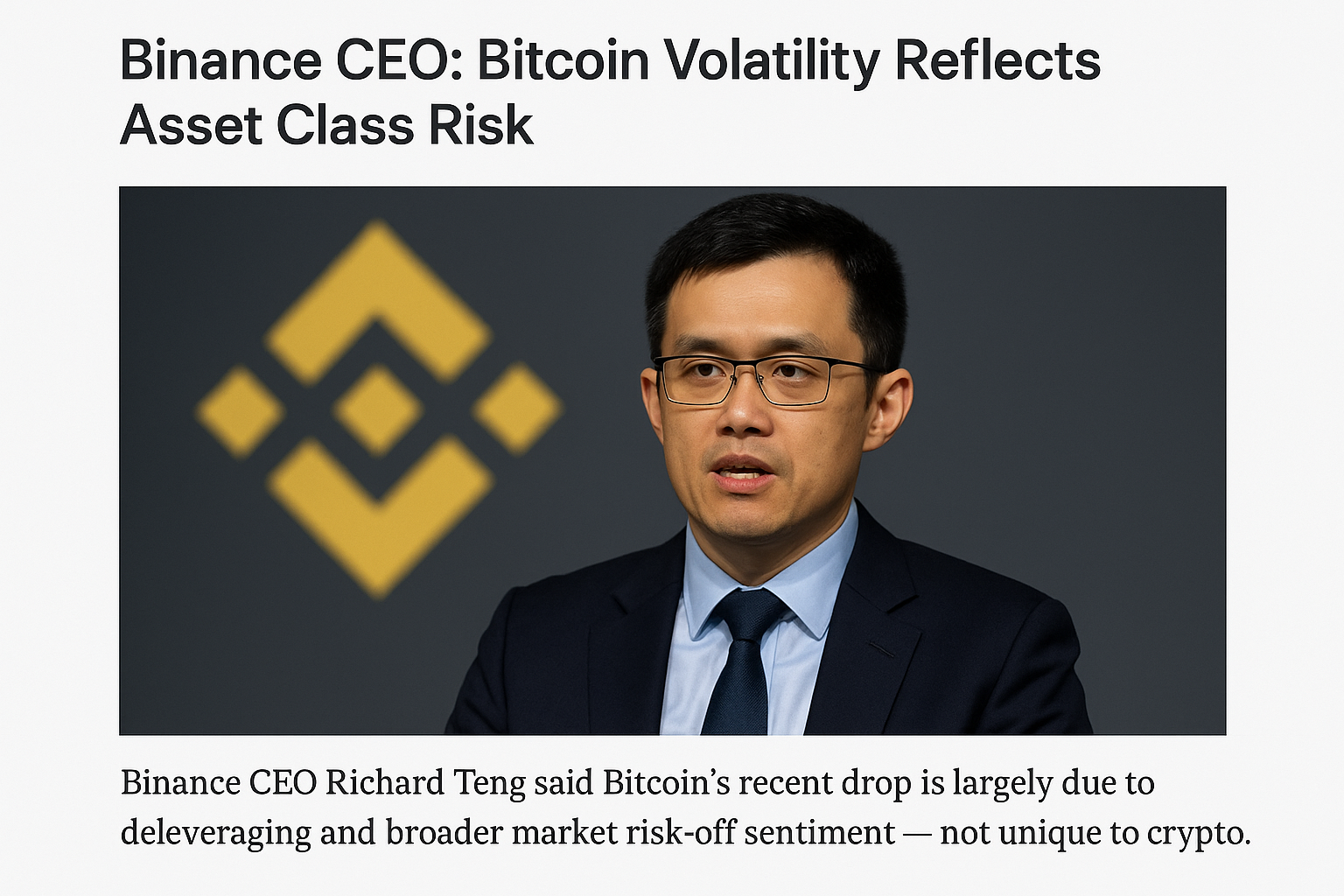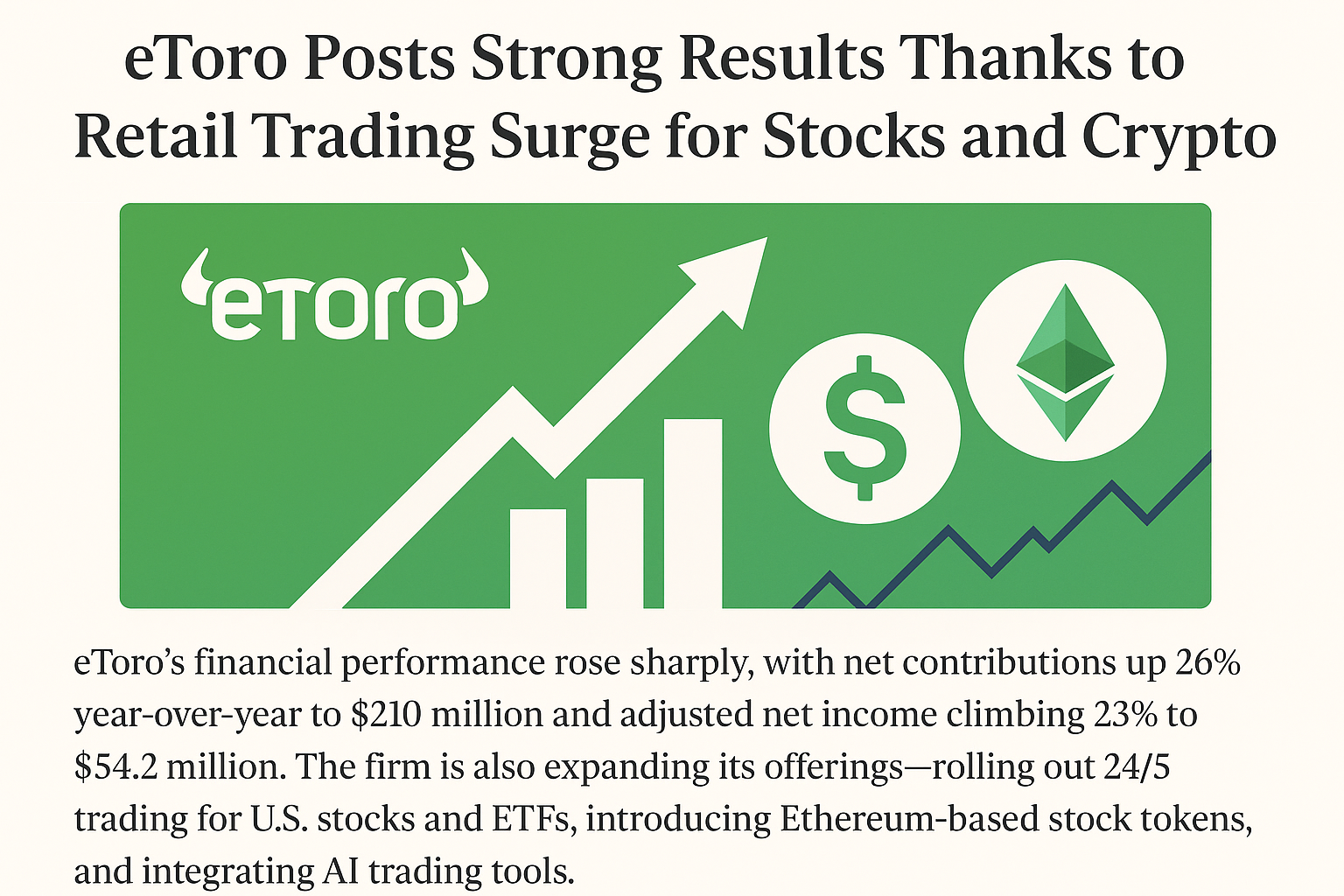Bitcoin’s latest price swings have once again ignited intense debate across financial markets, prompting analysts, traders, and skeptics to re-evaluate what drives crypto’s notoriously sharp volatility. But according to Binance CEO Richard Teng, the recent downturn should not be viewed as an isolated failure of digital assets. Instead, it reflects broader risk dynamics affecting global markets — an environment where investors are pulling back, deleveraging, and seeking safety amid growing macroeconomic uncertainty.
In a recent statement highlighted by Reuters, Teng emphasized that Bitcoin’s decline is not unique to the crypto ecosystem. Rather, it mirrors risk-off behavior seen across multiple asset classes, from equities and tech stocks to emerging markets. “This is not something exclusive to crypto,” he stressed. “The drop is heavily tied to deleveraging and a broader shift in sentiment.”
Deleveraging: The Core Driver Behind the Pullback
Across both traditional and digital markets, periods of exuberant risk-taking are often followed by rapid unwinding. Leverage amplifies gains in bullish conditions — but it also magnifies losses when confidence weakens.
According to Teng, a wave of deleveraging swept through the digital asset market as investors responded to shifting macro narratives. With uncertainty about the direction of U.S. interest rates, weak global economic indicators, and tightening liquidity conditions, traders were quick to reduce exposure. This triggered a domino effect: liquidations, margin calls, forced selling, and a steep contraction of market leverage.
Such cycles are not new. Crypto markets, due to their openness and 24/7 global liquidity, tend to experience deleveraging more quickly and more visibly than other asset classes. But Teng argues that this “amplified response” should not be mistaken for structural instability. Instead, it reflects crypto’s relatively young market structure, evolving maturity, and high levels of speculative participation — dynamics that gradually stabilize as institutional involvement deepens.
Crypto Is Not Alone — Markets Worldwide Are Under Pressure
Teng’s message is clear: Bitcoin is not crashing in isolation. Over recent weeks, global markets have been rattled by the same macro catalysts:
-
Uncertainty over the Federal Reserve’s interest rate path
-
Concerns about slowing global economic growth
-
A rotation away from risk assets
-
Reduced appetite for speculative investments
Stocks in sectors like AI, biotech, and emerging tech experienced similar drawdowns. Bond yields have fluctuated. Capital flight from riskier markets has accelerated. In that sense, Bitcoin is simply participating in a broader risk-off cycle, not leading one.
This perspective is particularly important as regulators, institutions, and the public often interpret Bitcoin’s volatility as evidence of fundamental fragility. Teng counters that sentiment by positioning Bitcoin as part of a global portfolio landscape — one that reacts to macro trends just like any other asset class.
Bitcoin’s Long-Term Strength Still Intact, Says Teng
Despite short-term turbulence, Teng remains optimistic about Bitcoin’s long-term trajectory. Historically, market downturns have preceded periods of accumulation, innovation, and renewed investor confidence.
He stresses that the fundamentals — increasing institutional adoption, advancements in blockchain infrastructure, clearer regulatory frameworks, and the continued interest from global investors — remain intact. Bitcoin volatility, in his view, reflects youth and cyclical behavior, not existential weakness.
Moreover, as crypto markets mature, Teng expects volatility to decline gradually. Institutional-grade infrastructure, improved on-chain transparency, and more sophisticated risk management tools all contribute to creating a more resilient market environment.
A Healthy Reset?
While price drops can be painful for traders, deleveraging phases often serve as healthy resets for the market. They flush out excessive speculation, reduce systemic risk, and pave the way for more sustainable growth. In past cycles, these same corrections have set the stage for strong recoveries.
Teng’s analysis suggests that the current environment, though turbulent, is part of a natural and necessary maturation process.
Richard Teng’s comments offer a grounded perspective in a time of heightened market anxiety. Instead of framing Bitcoin’s drop as a crypto-specific crisis, he places it within the global context of shifting investor sentiment, tightening financial conditions, and macroeconomic uncertainty.
His message to the market is straightforward: Bitcoin volatility reflects broader asset class risk — not a failure of crypto itself. As the industry continues to grow, develop institutional mechanisms, and integrate more deeply into global finance, these cycles may become less extreme. But for now, volatility remains part of Bitcoin’s identity — and a reminder of the high-risk, high-innovation environment in which digital assets operate.




